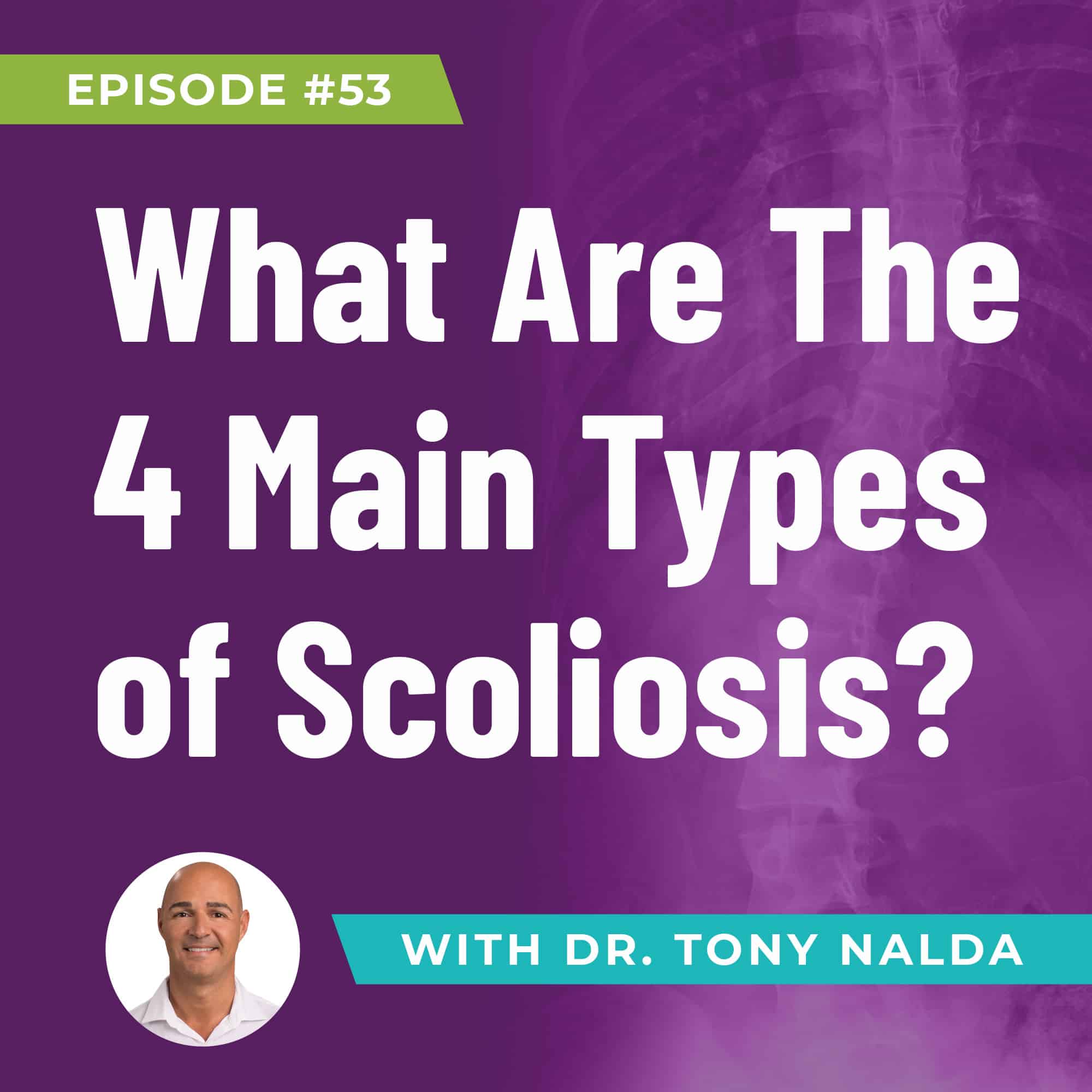Episode 53: What Are The 4 Main Types of Scoliosis?
When a patient is diagnosed with Scoliosis, usually they are not told what type of Scoliosis they can have and Scoliosis has many different types of variations.
Because scoliosis has high variables ranging from mild and moderate to severe to even very severe and Scoliosis can develop in many different areas of the spine, this includes the neck, which is the cervical spine, the thoracic spine, which is the mid-upper back, and of course, the lumbar spine, which is the lower back.
There are different types of curve types and patterns that can occur with scoliosis, and all these have different nuances to the treatment process in terms of what type of treatment you should receive.
4 main types or categories of Scoliosis:
- Idiopathic Scoliosis - there is not one clearly associated known cause with the condition. It is thought to be a multi-factorial problem and there are many different things that can contribute to the cause of Scoliosis. And since there are multiple variables, patients can have two or three different factors that can be contributing to Scoliosis. One thing we can definitely talk about is genetics. We know that Idiopathic Scoliosis is NOT 100% caused by genetics because studies have been done on identical twins and they have only found about 50% to 60% of identical twins both have Scoliosis, and these are patients that have the exact same DNA.
- Degenerative Scoliosis - this is the second most prevalent type in the adult patient. Adult Scoliosis, Degenerative Scoliosis or Denovo Scoliosis is caused because the spine goes through a degenerative phase. Doctors would often say that this is just age-related degeneration. I don’t believe that to be true at all because if that is the case, that means every single adult patient would have Degenerative Scoliosis because everybody's aging. What I believe happens is there's a small injury or a small misalignment that tends to occur to the spine, which causes the spine to shift out of alignment. It remains uncorrected for years and this causes abnormal or accelerated aging in that area. Unlike Idiopathic Scoliosis, with Degenerative Scoliosis, we know the cause but by the time we actually find it, the curve has become significant enough that the curve itself becomes its own problem.
- Neuromuscular Scoliosis - is a very complex problem, and the reason why is because there's normally a neuromuscular condition.2 Components of Neuromuscular Scoliosis
- Muscular Component – affects the connective tissue of the body
- Neurological Component – something at affects the nerve system. It can also be a brain condition.
- Interestingly enough, Neuromuscular Scoliosis is almost treated like Idiopathic Scoliosis because most of these neuromuscular conditions are also Idiopathic.
- Congenital Scoliosis – a type of Scoliosis you’re born with. This actually develops in the utero and it's basically one of the bones of the spine. Instead of being equal, rectangles stacked upon each other, we have something like a triangle or a hemivertebrae in between some vertebras and you can have multiple hemivertebrae in a row, or you can have some bones that don't fully separate or become distinct, and they actually stay partially fused. Congenital Scoliosis can become the most difficult to treat because it’s a bone deformity.
To get to know more about the 4 different types of Scoliosis and the different types of treatments associated with each type, check out Dr. Tony Nalda’s podcast.
Musicbed SyncID: MB01JNEWL1J7IBV
Podcast: Play in new window | Download
Subscribe: RSS
Dr. Tony Nalda
DOCTOR OF CHIROPRACTIC
After receiving an undergraduate degree in psychology and his Doctorate of Chiropractic from Life University, Dr. Nalda settled in Celebration, Florida and proceeded to build one of Central Florida’s most successful chiropractic clinics.
His experience with patients suffering from scoliosis, and the confusion and frustration they faced, led him to seek a specialty in scoliosis care. In 2006 he completed his Intensive Care Certification from CLEAR Institute, a leading scoliosis educational and certification center.
About Dr. Tony Nalda
 Ready to explore scoliosis treatment? Contact Us Now
Ready to explore scoliosis treatment? Contact Us Now








